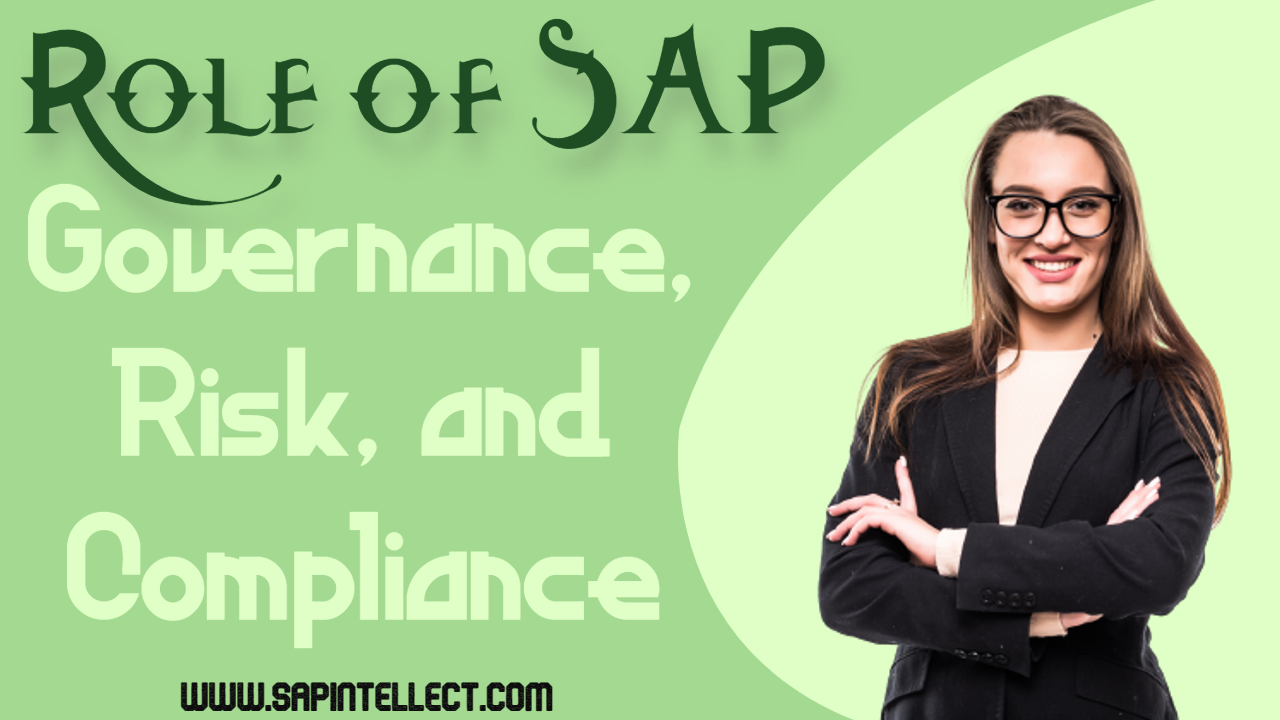SAP Governance, Risk, and Compliance (GRC): Navigating Business Challenges
In today’s dynamic and complex business environment, organizations face a multitude of challenges related to governance, risk management, and compliance (GRC). These challenges encompass regulatory compliance, data security, financial integrity, and more. To address these issues effectively, many enterprises turn to solutions like SAP Governance, Risk, and Compliance (GRC). In this comprehensive guide, we will delve into the world of SAP GRC, exploring its significance, components, benefits, and its role in enhancing overall corporate governance.
Understanding GRC
Governance, Risk, and Compliance (GRC) is a framework designed to help organizations align their strategies, processes, and operations with their objectives while managing risks effectively and ensuring compliance with relevant laws and regulations. SAP GRC is a specialized software suite that assists businesses in achieving these goals seamlessly.
Components of SAP GRC
SAP GRC is comprised of several key components, each serving a unique purpose:
- Access Control: Access Control focuses on managing user access to critical systems and data. It helps organizations enforce segregation of duties (SoD), ensuring that users don’t have conflicting permissions that could lead to fraud or data breaches.
- Process Control: Process Control streamlines internal controls by automating risk and compliance assessments. It helps in identifying control deficiencies, managing exceptions, and ensuring processes are in line with regulatory requirements.
- Risk Management: Risk Management enables organizations to identify, assess, and mitigate risks effectively. It provides a centralized platform for risk assessment and monitoring, helping businesses make informed decisions.
- Audit Management: Audit Management simplifies the audit process by automating audit planning, execution, and reporting. It ensures compliance with internal policies and external regulations, reducing the burden on auditors.
- Electronic Document and Records Management: This component helps organizations manage their documents and records electronically, ensuring data integrity, accessibility, and compliance with record-keeping requirements.
Benefits of SAP GRC
Implementing SAP GRC offers several benefits to organizations:
- Enhanced Risk Management: SAP GRC provides a holistic view of risks across the organization, helping companies proactively identify and mitigate potential threats. This leads to improved risk management strategies.
- Improved Compliance: By automating compliance checks and providing real-time monitoring, SAP GRC helps organizations stay compliant with ever-evolving regulatory requirements, reducing the risk of penalties and legal issues.
- Streamlined Processes: SAP GRC optimizes business processes by automating controls and reducing manual efforts. This leads to increased operational efficiency and cost savings.
- Data Security: The access control component of SAP GRC ensures that only authorized personnel have access to sensitive data, minimizing the risk of data breaches and unauthorized use.
- Enhanced Decision-Making: With access to real-time data and comprehensive risk assessments, executives can make more informed decisions, driving business growth and competitiveness.
- Transparency and Accountability: SAP GRC promotes transparency by providing a clear audit trail of all activities. This enhances accountability and helps in fraud detection and prevention.
Role in Corporate Governance
Corporate governance refers to the system of rules, practices, and processes by which a company is directed and controlled. SAP GRC plays a pivotal role in corporate governance by:
- Ensuring Accountability: SAP GRC enforces accountability by tracking and recording all user activities. This ensures that individuals within the organization are responsible for their actions and decisions.
- Risk Oversight: Effective corporate governance requires a thorough understanding of risks. SAP GRC provides real-time insights into risks, enabling boards and executives to oversee and manage them effectively.
- Compliance Assurance: Adherence to laws and regulations is a core component of corporate governance. SAP GRC automates compliance checks and reporting, ensuring the organization stays on the right side of the law.
- Data Governance: Data is a critical asset for modern businesses. SAP GRC’s data security features contribute to data governance by protecting sensitive information from unauthorized access or breaches.
- Efficiency and Effectiveness: Efficient processes and effective risk management are essential for good corporate governance. SAP GRC’s streamlined processes and risk mitigation capabilities contribute to these goals.
Implementing SAP GRC
Implementing SAP GRC is a significant undertaking that involves several key steps:
- Assessment: Understand your organization’s specific GRC needs, risks, and compliance requirements. Conduct a thorough assessment to identify areas that require attention.
- Planning: Develop a comprehensive implementation plan that outlines objectives, timelines, and resource requirements. Ensure buy-in from key stakeholders.
- Configuration: Customize SAP GRC to align with your organization’s processes and requirements. This includes setting up access controls, risk assessments, and compliance checks.
- Training: Provide training to employees and users who will interact with SAP GRC. Ensure they understand how to use the system effectively.
- Testing: Thoroughly test the SAP GRC system to identify and address any issues or gaps in functionality.
- Deployment: Roll out the SAP GRC system in phases, starting with critical areas. Monitor its performance and make necessary adjustments.
- Continuous Monitoring and Improvement: Regularly assess and update your SAP GRC implementation to adapt to changing business needs and evolving risks.
Challenges and Considerations
While SAP GRC offers numerous benefits, it also comes with challenges and considerations:
- Cost and Resources: Implementing and maintaining SAP GRC can be resource-intensive, requiring both financial and human resources.
- Complexity: The complexity of GRC processes and configurations can pose challenges during implementation. Organizations may need specialized expertise.
- Change Management: Adopting SAP GRC often necessitates changes in business processes. Effective change management is crucial to ensure smooth transitions.
- Integration: Integrating SAP GRC with existing systems and processes can be complex. Compatibility issues may arise.
- Data Security: As GRC systems handle sensitive data, ensuring robust data security measures is paramount.
In conclusion, SAP GRC is a powerful tool for organizations seeking to navigate the complexities of governance, risk management, and compliance. It offers a comprehensive suite of solutions that enhance corporate governance, mitigate risks, and ensure compliance with regulations. However, successful implementation requires careful planning, resource allocation, and ongoing monitoring. When implemented effectively, SAP GRC can be a cornerstone of a company’s strategy for sustainable growth and success in today’s competitive business landscape.







